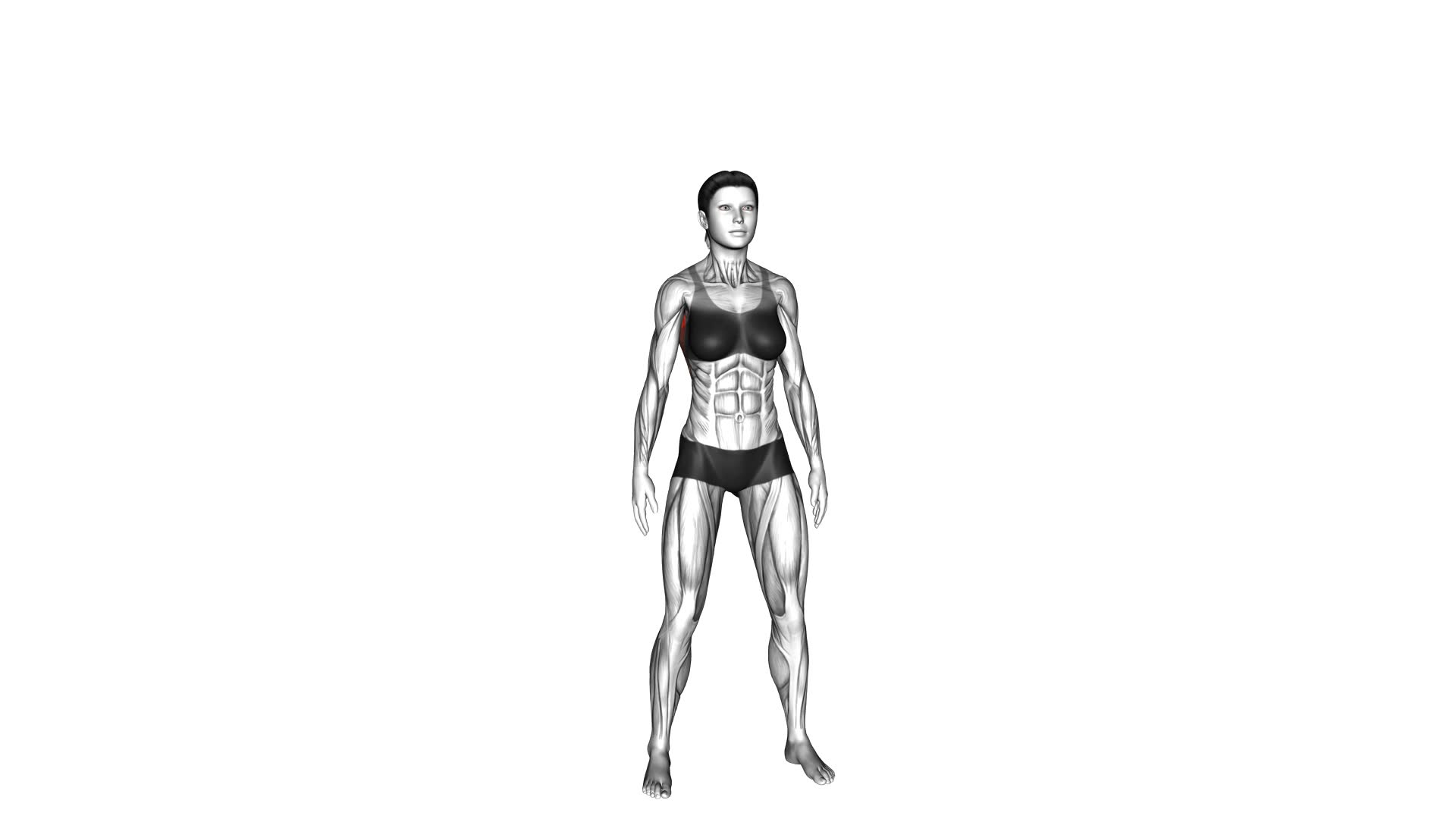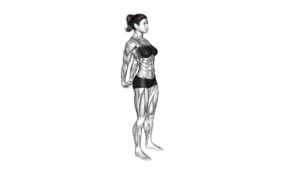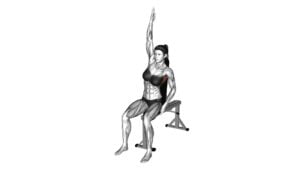Slopes Towards Stretch (female) – Video Exercise Guide & Tips

Are you looking for a new exercise to add to your routine? Look no further than slopes towards stretch!
Watch This Exercise Video
This video exercise guide and tips will show you the benefits of this move, proper form and technique, modifications for beginners, advanced variations and challenges, common mistakes to avoid, and tips for progression and results.
Get ready to stretch and strengthen your muscles with slopes towards stretch!
Key Takeaways
- Slopes towards stretch improve flexibility and prevent injuries.
- Maintaining proper form and technique is crucial for maximizing the benefits of the exercise.
- Beginners can modify the exercise by using lighter resistance bands, starting with smaller range of motion, and using a chair for support.
- Advanced variations and challenges include deep squat holds, one-legged slopes, resistance band add-ons, single-leg slopes, and adding ankle weights.
Benefits of Slopes Towards Stretch
You can experience the benefits of slopes towards stretch by incorporating this exercise into your workout routine. Slopes towards stretch is an effective exercise that can help improve flexibility and prevent injuries. Stretching is an essential component of any fitness regimen as it helps to increase the range of motion in your joints and muscles.
By performing slopes towards stretch, you can target specific muscle groups and work on improving their flexibility. Improved flexibility is crucial for various activities, such as sports, dancing, and everyday movements. By regularly practicing slopes towards stretch, you can gradually increase your flexibility, allowing you to move more freely and with greater ease. This can also help in reducing muscle soreness and preventing muscle strains.
Additionally, slopes towards stretch can play a significant role in injury prevention. When your muscles are flexible, they're less likely to become tight or strained during physical activities. This can help minimize the risk of injuries, such as pulled muscles or sprained ligaments. Incorporating slopes towards stretch into your routine can assist in maintaining optimal muscle and joint health.
Proper Form and Technique
Achieving proper form and technique is crucial for maximizing the benefits of slopes towards stretch. To ensure you're performing this exercise correctly, here are some tips to keep in mind:
- Maintain a neutral spine: Avoid arching or rounding your back during the movement. Keep your spine in a straight and neutral position to protect your lower back.
- Engage your core: Activate your abdominal muscles throughout the exercise to stabilize your torso and maintain proper alignment.
- Control the movement: Slow and controlled movements are key to effectively stretch your hamstrings and glutes. Avoid using momentum or bouncing during the exercise.
Now, let's discuss some common mistakes and tips for progression:
- Common mistakes: One common mistake isn't properly warming up before performing this exercise, which can lead to injury. Another mistake is leaning too far forward, which can strain your lower back. Lastly, avoid locking your knees as this can put excessive stress on your joints.
- Tips for progression: Start with a gentle slope and gradually increase the incline as you become more comfortable and flexible. You can also incorporate resistance bands or ankle weights to add intensity to the stretch. Remember to listen to your body and only progress when you feel ready.
Modifications for Beginners
If you're just starting out with exercise, it's important to have beginner modification techniques and simplified variations to help you ease into the routine.
These modifications can make the exercises more accessible and less overwhelming, allowing you to gradually build strength and flexibility.
Beginner Modification Techniques
To modify this exercise for beginners, start by using a lighter resistance band. This will make it easier for beginners to perform the exercise without straining their muscles.
Here are some other modification techniques for beginners:
- Start with smaller range of motion: Beginners can start by performing the exercise with a smaller range of motion. This will help them build strength and gradually increase the intensity of the exercise.
- Use a chair for support: Beginners can use a chair for support while performing the exercise. This will help them maintain balance and stability.
- Slow down the tempo: Beginners can slow down the tempo of the exercise to focus on proper form and technique. This will help them develop muscle control and prevent injury.
Simplified Exercise Variations
Start with simpler modifications to make the exercise easier for beginners. If you're new to fitness or just starting out, it's important to find beginner-friendly exercises that allow you to build strength and flexibility gradually.
Instead of attempting complex movements right away, focus on mastering the basics. For example, if you're trying a slopes towards stretch, start by performing the exercise on a flat surface instead of an incline. This will decrease the intensity and make it more manageable for beginners.
As you gain strength and confidence, you can gradually increase the difficulty by adding an incline or using resistance bands for added challenge. Remember, it's important to listen to your body and progress at your own pace.
Advanced Variations and Challenges
Ready to take your workout to the next level?
In the realm of advanced variations and challenges, you'll find complex modifications that push your physical limits further. These exercises are designed for experts who are looking to intensify their training and achieve new levels of strength and flexibility.
Get ready to challenge yourself and elevate your fitness game with these advanced variations.
Complex Modifications for Experts
Challenge yourself with advanced variations and modifications to take your slopes towards stretch exercise to the next level. Here are some complex modifications for experts:
- Deep Squat Holds: Instead of holding a shallow squat position, challenge yourself by lowering into a deep squat and holding it for an extended period. This will increase the intensity and engage your muscles even more.
- One-Legged Slopes: Try performing the slopes towards stretch exercise on one leg instead of using both legs. This advanced technique will require greater stability and balance, while also targeting specific muscles in your supporting leg.
- Resistance Band Add-On: To add an extra challenge, incorporate a resistance band into your slopes towards stretch exercise. Wrap the band around your thighs and perform the exercise as usual. The resistance from the band will make the movement more difficult and help to strengthen your muscles.
Pushing Physical Limits Further
To further push your physical limits, incorporate these advanced variations and challenges into your slopes towards stretch exercise routine. These techniques are designed to help you advance your flexibility and overcome plateaus in your fitness journey.
One advanced variation you can try is the single-leg slopes towards stretch. Instead of using both legs, focus on stretching one leg at a time, which increases the intensity and demands more balance and control.
Another challenge is to add ankle weights to your slopes towards stretch. This added resistance will increase the difficulty and further enhance your strength and flexibility.
Remember to always listen to your body and progress at your own pace. Pushing your physical limits doesn't mean pushing too hard and risking injury. Stay consistent and dedicated, and you'll continue to see improvements in your flexibility and overall fitness level.
Common Mistakes to Avoid
To maximize your workout effectiveness, it's crucial to steer clear of these common mistakes while performing the Slopes Towards Stretch exercise. Avoiding these errors won't only help you achieve better results but also prevent potential injuries. Here are some common mistakes to avoid:
- Rounding your back: Keep your spine straight throughout the exercise to avoid straining your lower back. Engage your core muscles to maintain proper posture.
- Rushing the movement: Take your time and perform the exercise slowly and controlled. Rushing through the reps can compromise your form and reduce the effectiveness of the stretch.
- Neglecting progress tracking: Keep track of your progress by recording the number of reps and the range of motion you achieve. This will help you monitor your improvement over time and make necessary adjustments to your workout routine.
By avoiding these common mistakes and ensuring proper form, you can maximize the benefits of the Slopes Towards Stretch exercise.
Remember to listen to your body and make modifications as needed to avoid any discomfort or strain. Stay consistent and track your progress to see the positive changes in your flexibility and overall fitness level.
Tips for Progression and Results
How can you continue to progress and achieve optimal results with the Slopes Towards Stretch exercise?
The key to progression and getting the most out of this exercise is through the concept of progressive overload. Progressive overload involves gradually increasing the intensity or difficulty of your workouts over time. This can be done by adding more resistance, increasing the number of repetitions, or extending the duration of the exercise.
To effectively stretch your muscles and improve flexibility, it's important to incorporate effective stretching techniques. One technique is to hold each stretch for at least 30 seconds to allow the muscles to relax and lengthen. Additionally, you can incorporate dynamic stretching, which involves moving through a full range of motion to warm up the muscles before the exercise.
Another tip for progression and results is to listen to your body and adjust the intensity accordingly. If you find that the exercise is becoming too easy, it may be time to increase the resistance or try a more advanced variation of the exercise. On the other hand, if you're struggling to perform the exercise with proper form, it's important to decrease the intensity and focus on mastering the basic movements first.
Frequently Asked Questions
How Many Repetitions of Slopes Towards Stretch Should I Do in One Workout Session?
To determine the repetition count for slopes towards stretch in one workout session, consider the benefits of this exercise.
Slopes towards stretch help improve flexibility and strengthen your lower body.
Start with a comfortable number of repetitions, such as 10, and gradually increase as you get more comfortable.
Listen to your body and adjust the repetition count accordingly.
Remember to maintain proper form and take breaks if needed.
Can I Perform Slopes Towards Stretch if I Have a Knee Injury?
If you have a knee injury, it's important to be cautious when performing slopes towards stretch. Before attempting this exercise, consult with your doctor or physical therapist to determine if it's safe for you.
They may recommend injury modifications or alternative exercises that can be done to stretch your muscles without aggravating your knee.
Always prioritize your safety and listen to your body when exercising with an injury.
Is It Suitable for Pregnant Women to Do Slopes Towards Stretch?
Yes, slopes towards stretch can be suitable for pregnant women with some precautions.
It's important to consult with your healthcare provider before attempting any exercise during pregnancy. They can provide guidance on modifications to ensure your safety and the safety of your baby.
Additionally, if you have a knee injury, it's important to modify the exercise to avoid further strain or discomfort.
Always listen to your body and stop if you experience any pain.
Should I Warm up Before Doing Slopes Towards Stretch?
Before doing slopes towards stretch, it's important for you to warm up. Warming up helps to prepare your body for the exercise and reduces the risk of injury.
You can try alternative warm up exercises such as light cardio or dynamic stretches. These exercises will increase your heart rate, warm up your muscles, and improve your flexibility.
How Long Should I Hold Each Stretch During the Slopes Towards Stretch Exercise?
When doing the slopes towards stretch exercise, it's important to focus on proper stretching technique.
As for how long you should hold each stretch, aim for about 15 to 30 seconds. This allows enough time for your muscles to relax and lengthen.
Holding the stretch for too short of a time may not provide the full benefits, while holding it for too long can lead to muscle strain.
Conclusion
In conclusion, slopes towards stretch is a beneficial exercise that helps improve flexibility and strengthen various muscles.
By following proper form and technique, beginners can gradually progress and advance to more challenging variations.
It's important to avoid common mistakes and focus on progression for optimal results.
Incorporating slopes towards stretch into your fitness routine can lead to improved flexibility and overall physical fitness.

Author
Years ago, the spark of my life’s passion ignited in my mind the moment I stepped into the local gym for the first time. The inaugural bead of perspiration, the initial endeavor, the very first surge of endorphins, and a sense of pride that washed over me post-workout marked the beginning of my deep-seated interest in strength sports, fitness, and sports nutrition. This very curiosity blossomed rapidly into a profound fascination, propelling me to earn a Master’s degree in Physical Education from the Academy of Physical Education in Krakow, followed by a Sports Manager diploma from the Jagiellonian University. My journey of growth led me to gain more specialized qualifications, such as being a certified personal trainer with a focus on sports dietetics, a lifeguard, and an instructor for wellness and corrective gymnastics. Theoretical knowledge paired seamlessly with practical experience, reinforcing my belief that the transformation of individuals under my guidance was also a reflection of my personal growth. This belief holds true even today. Each day, I strive to push the boundaries and explore new realms. These realms gently elevate me to greater heights. The unique combination of passion for my field and the continuous quest for growth fuels my drive to break new ground.



